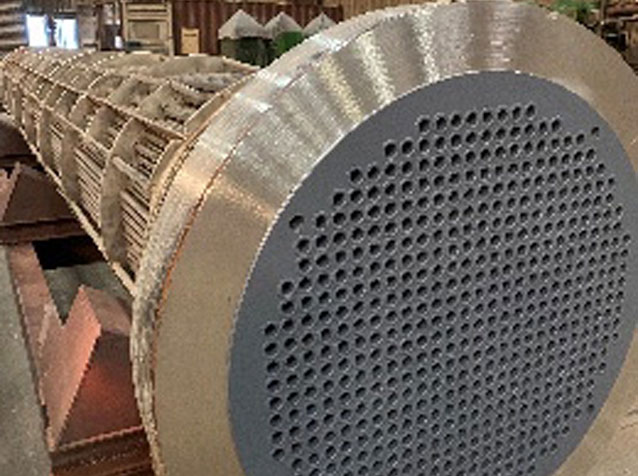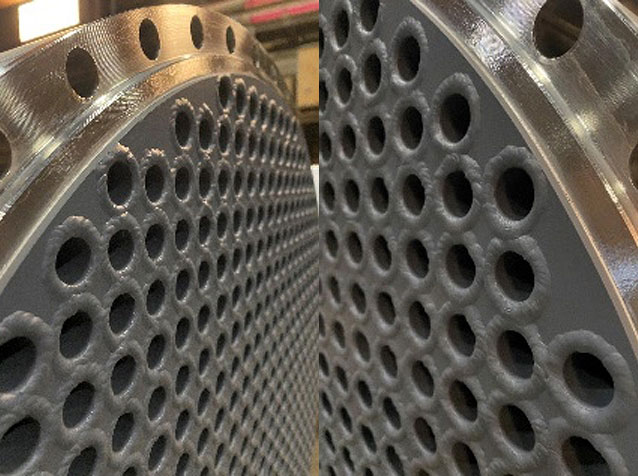Recent advances in material science have produced durable, low-surface-energy, thin-film coatings that dramatically improve the release performance of stainless steel, titanium, and copper-alloy exchanger tubes.
Refinery operators often specify these coatings for alloyed-up tubes to combat cooling water pitting and deposit corrosion. Even with upgraded metallurgy, Tube-ID fouling and scaling can still occur—but these new coatings significantly mitigate the problem.
Tubes Protected. Heat Transferred.
When compared to newly fabricated stainless steel tubes, Curran’s durable low-surface-energy coatings:
- Reduce surface tension to less than 25 dynes/cm²—a three-fold reduction over uncoated tubes
- Slightly smooth tube surface, creating a high contact angle (>90°)
- Deliver hydrophobic and oleophobic performance, inhibiting fluid “wet-out” and fouling
This combination ensures that tubes remain protected without compromising heat-transfer efficiency.
Real-World Results
Midwest Refinery
- Titanium U-tube and cooling water bundles coated
- Eliminated the need for annual hydro-lance tube-ID cleaning
- Maintained shell-side thermal duty, reducing backpressure
Texas Gulf Coast Refinery
- Coated atmospheric overhead stainless steel exchangers operated in parallel with uncoated units
- Coated exchanger showed ~9% improved flow immediately
- Four months later, coated bundle still delivered ~50% higher cooling water flow compared to cleaned uncoated exchanger
Curran coatings are less than 50 microns thick, maintaining the exchanger’s designed thermal performance while providing durable anti-fouling protection.


A Wide Selection of Low-Surface-Energy Coatings
Curran’s advanced coating portfolio includes:
- Sol-Gel materials
- Pre-ceramic polymers
- Epoxy-silicone formulations
These coatings are compatible with most refinery cooling water exchanger materials, delivering long-term performance, minimal maintenance, and improved efficiency.
Learn More
Explore Curran’s full line of foul-release exchanger coatings:
🌐 Curran International – Foul Release Coatings
📞 281.339.9993
